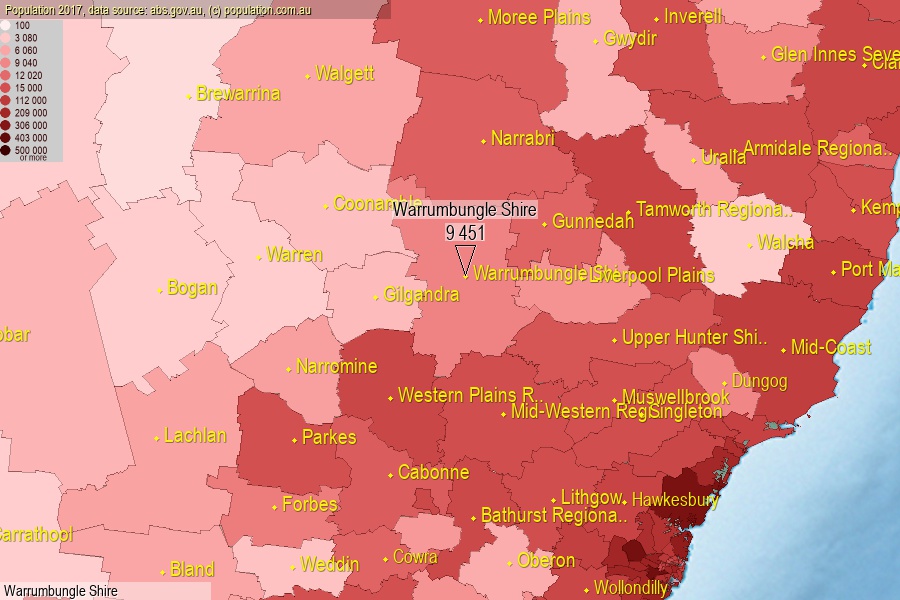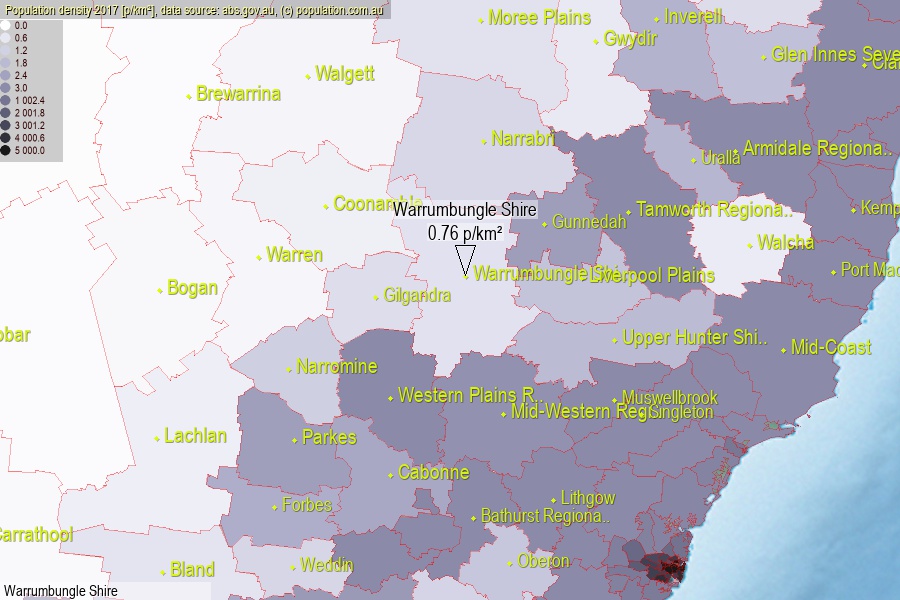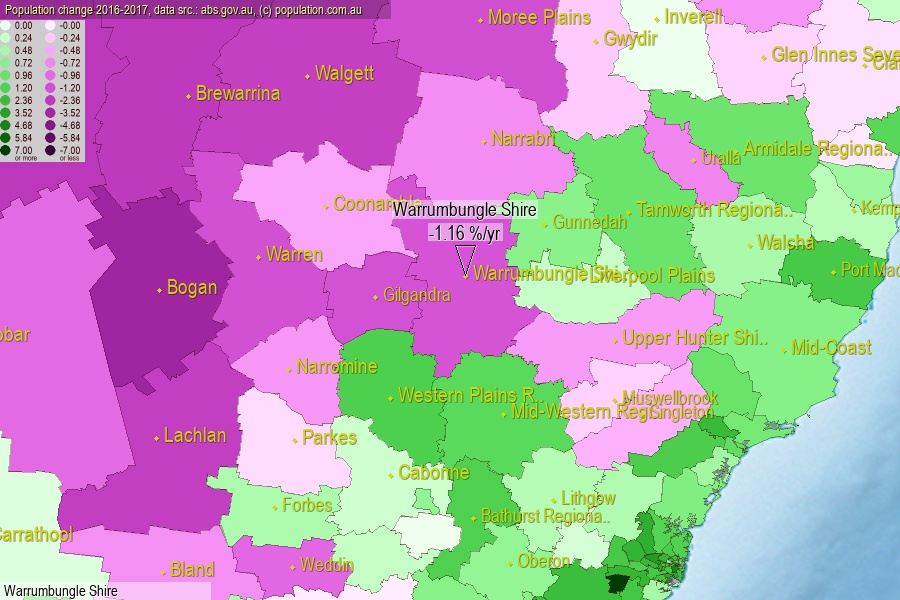 population.com.au
population.com.auLast official estimated population of Warrumbungle Shire Area (as Local Government Area) was 9 451 people (on 2017-06-30)[2]. This was 0.04% of total Australian population and 0.119% of NSW population. Area of Warrumbungle Shire is 12 372.10 km², in this year population density was 0.76 p/km² . If population growth rate would be same as in period 2016-2017 (-1.16%/yr), Warrumbungle Shire population in 2025 would be 8 608. [0]



Click to enlarge. Warrumbungle Shire is located in the center of the images.
Population [people], population density [p./km²] and population change [%/year] [2]
[1996-2001] -0.13 %/Y
[2001-2002] -1.32 %/Y
[2002-2003] -1.64 %/Y
[2003-2004] -1.80 %/Y
[2004-2005] -1.00 %/Y
[2005-2006] -1.19 %/Y
[2006-2007] -0.82 %/Y
[2007-2008] -0.27 %/Y
[2008-2009] +0.05 %/Y
[2009-2010] -0.09 %/Y
[2010-2011] -0.23 %/Y
[2011-2012] -0.50 %/Y
[2012-2013] -1.08 %/Y
[2013-2014] -0.55 %/Y
[2014-2015] -0.69 %/Y
[2015-2016] -0.62 %/Y
[2016-2017] -1.16 %/Y
[0] Calculated with linear interpolation from officially estimated population
[1] Read more about LGA and Australian Statistical Geography Standard (ASGS) on abs.gov.au
[2] Population data from Australian Bureau of Statistics (Population and density: 2017; change: 2016-2017)
[3] Digital Boundaries: Australian Statistical Geography Standard (ASGS) 2016.